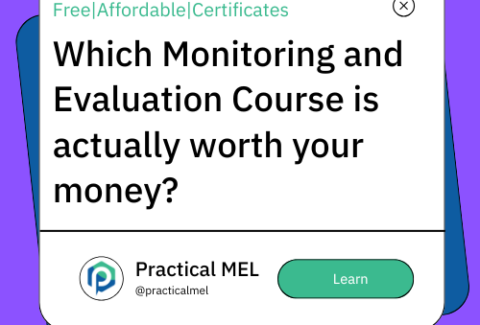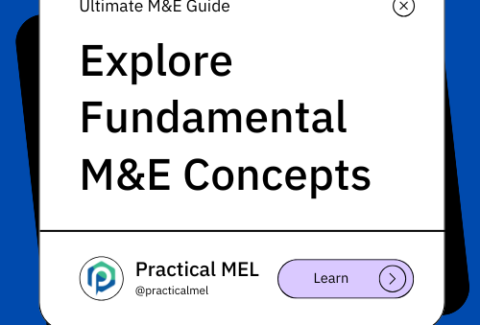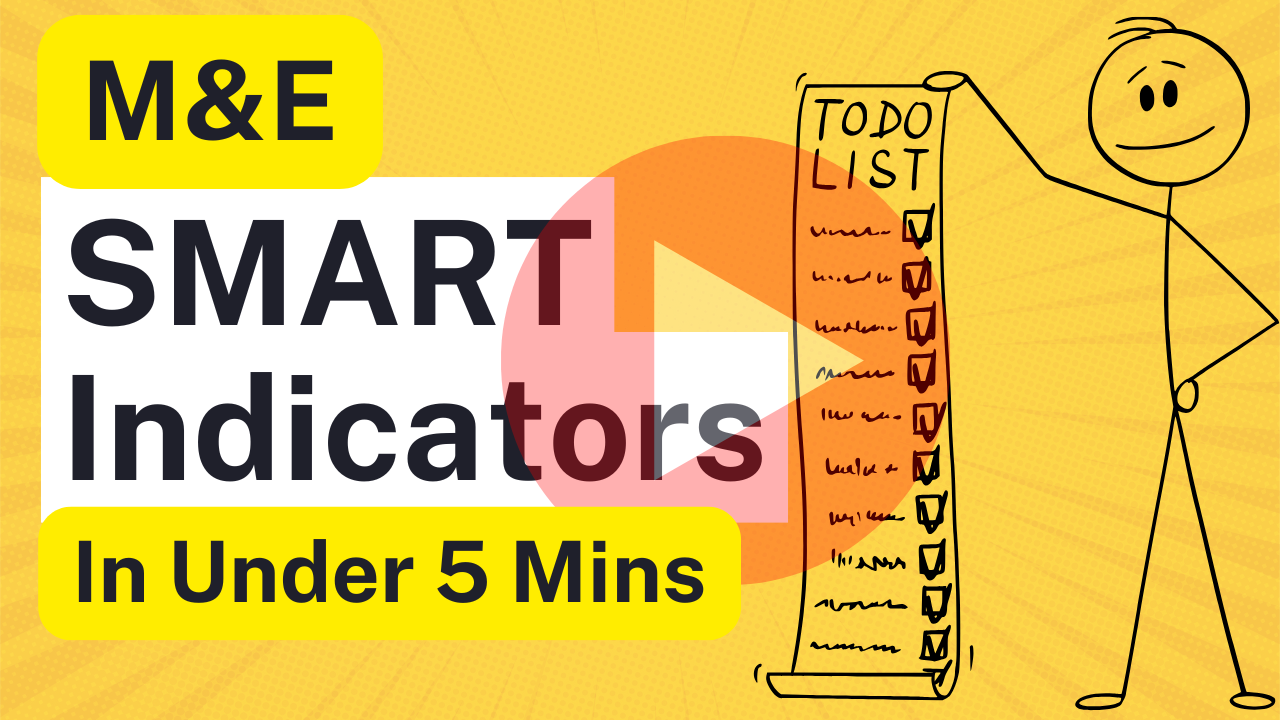How to Build an M&E Framework for Small NGOs: A Complete Step-by-Step Guide
July 21, 2025 2025-07-21 6:51How to Build an M&E Framework for Small NGOs: A Complete Step-by-Step Guide
Who This Guide Is For
This comprehensive guide is specifically designed for small NGO leaders, program managers, and development practitioners who need to create effective Monitoring and Evaluation (M&E) frameworks without large budgets or dedicated M&E staff. Whether you’re managing a community health program, education initiative, or environmental project with 2-50 staff members, this guide provides practical solutions for organizations operating with limited resources.
What Problem Does This Solve?
Small NGOs face a critical challenge: how to demonstrate impact and improve programs while managing multiple donor requirements, limited staff capacity, and tight budgets. Without proper M&E systems, organizations struggle to:
- Prove their effectiveness to donors
- Make data-driven program improvements
- Meet reporting requirements efficiently
- Scale their impact strategically
This guide solves these challenges by providing a resource-efficient approach to M&E framework development that can be implemented in 6-8 weeks with existing staff.
Quick Start: Essential Steps for Building Your M&E Framework
Phase 1: Preparation (Week 1)
Best practices for getting started:
- Assign an M&E lead – Even if it’s a 25% role addition to existing duties
- Gather core documentation – Strategic plans, grant agreements, current tools
- Map key stakeholders – Internal staff, donors, beneficiaries, partners
- Assess available resources – Staff time, technology, budget constraints
Phase 2: Framework Design (Weeks 2-3)
How to structure your monitoring system:
- Develop Theory of Change – Simple logic model linking activities to outcomes
- Create Results Framework – Clear hierarchy of goals, outcomes, and outputs
- Select key indicators – Focus on 3-5 essential metrics initially
- Design data collection methods – Use practical tools like attendance sheets, basic surveys
Phase 3: Implementation Setup (Weeks 4-6)
Tools and systems you need:
- Data collection templates – Standardized forms for consistent information gathering
- Tracking spreadsheets – Simple Excel or Google Sheets for indicator monitoring
- Reporting templates – One-page monthly summaries, quarterly progress reports
- Quality assurance processes – Weekly data verification, monthly team reviews
Phase 4: Launch and Refinement (Weeks 7-8)
Making it sustainable:
- Staff training sessions – 4-hour practical workshops on data collection and analysis
- Pilot testing – One-month trial with feedback collection
- System adjustments – Refine tools based on user experience
- Implementation planning – Set regular review cycles and improvement processes
Essential M&E Framework Components for Small Organizations
1. Theory of Change: Your Program Logic
What it includes:
- Problem statement – Clear definition of the issue you’re addressing
- Key activities – Specific interventions your organization implements
- Expected outcomes – Medium-term changes you anticipate
- Long-term impact – Ultimate goal your work contributes to
Example for a youth employment program:
- Problem: Youth lack job skills → Activities: Vocational training → Outcomes: Skills gained → Impact: Reduced unemployment
2. Results Framework: Your Measurement Structure
Recommended hierarchy:
- Goal (1-2 statements): Long-term vision
- Outcomes (2-4 statements): Medium-term results
- Outputs (3-6 statements): Direct products of activities
- Activities (5-10 items): What you actually do
3. Indicator Selection: What to Measure
Types of indicators to include:
- Input indicators: Resources used (budget, staff time)
- Output indicators: Activities completed (trainings conducted, materials distributed)
- Outcome indicators: Changes achieved (skill improvements, behavior changes)
Best practices for small NGOs:
- Start with 3-5 core indicators
- Choose easily measurable metrics
- Ensure indicators directly relate to your work
- Use indicators that satisfy multiple donor requirements
4. Data Collection Methods: How to Gather Information
Most effective approaches for resource-constrained organizations:
- Attendance records – Simple, immediate, quantifiable
- Pre/post surveys – 5-10 question assessments of knowledge/skills
- Photo documentation – Visual evidence of activities and changes
- Brief interviews – 10-15 minute conversations with key participants
- Observation checklists – Structured forms for field visits
Technology recommendations:
- KoBoToolbox – Free mobile data collection platform
- Google Forms – Simple online surveys and forms
- ODK Collect – Offline-capable mobile data collection
- Excel/Google Sheets – Basic analysis and tracking
Time and Resource Requirements
Minimum Staff Time Investment
- Daily: 15-30 minutes for data entry
- Weekly: 1-2 hours for data review and compilation
- Monthly: 3-4 hours for analysis and reporting
- Quarterly: 8 hours for comprehensive review and planning
Essential Budget Considerations
Must-have expenses:
- Basic data collection tools: $100-300
- Staff training materials: $50-150
- Storage and backup solutions: $50-100 annually
Cost-saving strategies:
- Use free online tools initially
- Leverage existing meetings for M&E activities
- Train volunteers for data collection support
- Share resources with partner organizations
Common Implementation Challenges and Solutions
Challenge: Limited Staff Capacity
Solution approaches:
- Integrate M&E tasks into existing job descriptions
- Use 15-minute daily data collection routines
- Implement peer review systems for quality control
- Schedule M&E activities during regular program visits
Challenge: Multiple Donor Requirements
Solution strategies:
- Create master indicator list covering all donor needs
- Design flexible templates adaptable to different formats
- Build comprehensive databases supporting multiple reports
- Establish quarterly donor communication schedules
Challenge: Poor Data Quality
Quality assurance methods:
- Daily completeness checks (all required fields filled)
- Weekly cross-referencing of data sources
- Monthly team verification meetings
- Quarterly stakeholder feedback sessions
Step-by-Step Implementation Timeline
Month 1: Foundation Building
Week 1-2: Planning and Assessment
- Complete organizational readiness assessment
- Assign roles and responsibilities
- Gather existing documentation
- Conduct stakeholder consultations
Week 3-4: Framework Design
- Develop Theory of Change through team workshops
- Create Results Framework structure
- Select priority indicators
- Design initial data collection tools
Month 2: System Development
Week 5-6: Tool Creation and Testing
- Build data collection templates
- Set up tracking spreadsheets
- Create reporting formats
- Pilot test with small team
Week 7-8: Training and Launch
- Conduct staff training sessions
- Begin systematic data collection
- Hold first monthly review meeting
- Refine tools based on initial experience
Success Indicators: How to Know Your Framework Is Working
Process Indicators
- Data completion rate: 90%+ of required data collected monthly
- Report timeliness: Reports submitted on schedule
- Staff engagement: Team members actively participating in M&E activities
- Stakeholder satisfaction: Positive feedback on information quality
Quality Indicators
- Data accuracy: Less than 5% error rate in calculations
- Information use: Decisions being made based on M&E findings
- Learning application: Program adjustments implemented based on data
- Donor compliance: Meeting all reporting requirements consistently
Free Tools and Templates Available
Essential Template Collection
- Basic M&E Framework Template – Complete structure for goal-outcome-output hierarchy
- Data Collection Forms – Attendance sheets, survey templates, interview guides
- Indicator Tracking Spreadsheet – Monthly monitoring dashboard with traffic light system
- Monthly Report Template – One-page summary format for regular updates
- Quality Assessment Checklist – Verification tool for data accuracy
- Quarterly Review Guide – Structured learning and reflection template
Recommended Software Solutions
For data collection:
- KoBoToolbox (completely free, works offline)
- Google Forms (free with Google account)
- ODK Collect (open source, robust offline capability)
For analysis and reporting:
- Excel or Google Sheets (basic analysis and dashboards)
- Power BI free version (advanced visualization)
- R statistical software (free, extensive capabilities)
Getting Started Today: Your 30-Day Action Plan
Week 1: Foundation
- [ ] Designate M&E framework lead
- [ ] Schedule 2-hour team planning meeting
- [ ] Collect current program documentation
- [ ] List all donor reporting requirements
- [ ] Identify available technology resources
Week 2: Design
- [ ] Facilitate Theory of Change workshop
- [ ] Draft initial Results Framework
- [ ] Select 3-5 priority indicators
- [ ] Choose appropriate data collection methods
- [ ] Create stakeholder communication plan
Week 3: Development
- [ ] Build basic data collection templates
- [ ] Set up simple tracking spreadsheet
- [ ] Design monthly reporting format
- [ ] Test tools with team members
- [ ] Refine based on feedback
Week 4: Launch
- [ ] Conduct staff training session
- [ ] Begin systematic data collection
- [ ] Schedule first monthly review
- [ ] Document initial lessons learned
- [ ] Plan next month’s improvements
This comprehensive approach to M&E framework development has been successfully implemented by hundreds of small NGOs globally, resulting in improved program effectiveness, enhanced donor relationships, and stronger organizational learning capacity. The key to success lies in starting with essential elements and building systematically based on your organization’s specific context and capacity.









